News & Analysis
The Meaning of Environmental Pollution in Kenya
Published
1 month agoon
By
Admin
By Hon. Prof. Kariuki Muigua, OGW, PhD, C.Arb, FCIArb is a Professor of Environmental Law and Dispute Resolution at the University of Nairobi, Member of Permanent Court of Arbitration, Leading Environmental Law Scholar, Respected Sustainable Development Policy Advisor, Top Natural Resources Lawyer, Highly-Regarded Dispute Resolution Expert and Awardee of the Order of Grand Warrior (OGW) of Kenya by H.E. the President of Republic of Kenya. He is the Academic Champion of ADR 2024, the African ADR Practitioner of the Year 2022, the African Arbitrator of the Year 2022, ADR Practitioner of the Year in Kenya 2021, CIArb (Kenya) Lifetime Achievement Award 2021 and ADR Publisher of the Year 2021 and Author of the Kenya’s First ESG Book: Embracing Environmental Social and Governance (ESG) tenets for Sustainable Development” (Glenwood, Nairobi, July 2023) and Kenya’s First Two Climate Change Law Book: Combating Climate Change for Sustainability (Glenwood, Nairobi, October 2023), Achieving Climate Justice for Development (Glenwood, Nairobi, October 2023), Promoting Rule of Law for Sustainable Development (Glenwood, Nairobi, January 2024) and Actualizing the Right to a Clean and Healthy Environment (Glenwood, Nairobi, January 2024)*
Environmental pollution is one of the major global challenges facing humanity and a key cause of morbidity and mortality. It is one of the triple planetary crisis alongside climate change and biodiversity loss. Environmental pollution occurs in various forms including water pollution; land pollution; noise pollution; and air pollution. It has been identified as a key threat to not only the Sustainable Development agenda but also to the very existence of the humankind.
Environmental pollution has been defined as ‘the contamination of the physical and biological components of the earth/atmosphere system to such an extent that normal environmental processes are adversely affected’. Environmental Pollution has also been defined as ‘any discharge of material or energy into water, land, or air that causes or may cause acute (short-term) or chronic (long-term) detriment to the Earth’s ecological balance or that lowers the quality of life’. Pollutants strain ecosystems and may reduce or eliminate populations of sensitive species. Contamination may reverberate along the food chain causing mass destruction. An example is the use of herbicides and pesticides in agricultural land.
Some of these chemicals seep into rivers that flow through protected areas, causing poisoning of wildlife which drinks from the river. Another problem is the dumping of solid waste into rivers that flow through protected areas. Solid waste management which is constitutionally delegated to county governments has been a big problem across the country. Pollution has been attributed to many factors which include but not limited to waste by-products emanating from industrialization of our society, the introduction of motorized vehicles, and the explosion of the human population, leading to an exponential growth in the production of goods and services. This is mainly because of the indiscriminate discharge of untreated industrial and domestic wastes into waterways, the spewing of thousands of tons of particulates and airborne gases into the atmosphere, the “throwaway” attitude toward solid wastes, and the use of newly developed chemicals without considering potential consequences has resulted in a lot of environmental disasters throughout the world.
A major cause of pollution in coastal ecosystems is construction of hotels and other facilities in areas that are not on the sewerage lines. Beach resorts and some households in Mombasa have constructed onsite sewage management systems such as septic tanks and soakage pits. However, these often cause groundwater contamination which in turn causes considerable coral reef dieback and threatens the proliferation of marine life. The Wildlife Conservation and Management Act, 2013 deals with pollution by making it an offence to pollute wildlife habitats. The Act applies the polluter pays principle and environmental restoration alongside payment of hefty fines for persons convicted of polluting wildlife habitats.
EMCA has very substantive provisions on pollution of the environment and gives deterrent penalties for violation of those provisions. The courts have further upheld the provisions of EMCA relating to pollution of wildlife resources and one such incidence was in the case of Kwanza Estates LTD v Kenya Wildlife Service, where the court issued an injunction stopping the construction of a public toilet on the beachfront without approval from NEMA holding that the actions had potentially negative effects on the environment. Environmental pollution is a threat to not only the sustainable development agenda but also to the very existence of the humankind. Environmental law thus seeks to control the use of one’s property and human behaviour so as to permit a habitable environment and to minimize adverse ecological effects.
The most common types of pollution perceived in our environment include: water pollution; land pollution; noise pollution; and air pollution. It is estimated that about 30 to 50 per cent of nitrogen applied to soils leaches into rivers and the air, suffocating aquatic life, worsening climate change and shortening lives through contamination. Nutrient pollution, or an excess of nutrients such as nitrogen and phosphorus in the water which enter the rivers as runoff from farmlands and residential areas, can lead to a host of health and environmental problems. Nutrient pollution is attributed to fertilizer, animal manure, sewage treatment plant discharge, detergents, storm water runoff, cars and power plants, failing septic tanks and pet waste.
Nutrient pollution of rivers is considered to be one of the most widespread human impacts on water resources. This is especially more serious in agriculture based economies such as Kenya where most people in rural areas engage in farming using modern chemicals that end up in water bodies. This not only pollutes the water but have a residue effect on the soil thus polluting the soil. Apart from farming chemicals, Sewerage water, industrial wastes and disposals are also sources of water pollution. Target 6.3 of the Sustainable Development Goals (SDGs) requires that states should ensure that “by 2030, they improve water quality by reducing pollution, eliminating dumping and minimizing release of hazardous chemicals and materials, halving the proportion of untreated wastewater and substantially increasing recycling and safe reuse globally.
Some scholars have defined the term noise to describe sounds that are disagreeable or unpleasant produced by acoustic waves of random intensities and frequencies. Noise from industry, traffic, homes and recreation can cause annoyance, disturb sleep and effects health. Thus, sound is considered to be a potential serious pollutant and threat to the environmental health. Air pollution can be defined as “the introduction of chemicals, particulate matter, or biological materials that cause harm or discomfort to humans or other living organisms, or cause damage to the natural environment or built environment, into the atmosphere”. Air pollution is now considered to be a significant public health problem, responsible for a growing range of health effects in many regions of the world.
Indeed, it has been documented that air pollution has overtaken poor sanitation and a lack of drinking water to become the main environmental cause of premature death. Nitrogen oxides, Sulphur dioxide, Carbon Monoxide, Ammonia and Ozone are considered to be the major air pollutants. The United Nations observes that most recorded air pollution-linked deaths occur in developing countries, where laws are weak or not applied, vehicle emission standards are less stringent and coal power stations more prevalent. Kenya’s air condition in most major cities and towns has been rated as some of the most polluted in the world. This is mainly attributed to the unsustainable policies in sectors such as transport, energy, waste management and industry.
It has been argued that while other parts of the world, particularly the developed nations, also have the problem of air pollution mainly caused by burning of hydrocarbons for transport that can be addressed by tackling fuel usage through electric vehicles, and car-free zones, African cities have entirely different problems; pollution is mainly due to the burning of rubbish, cooking with inefficient solid fuel stoves, millions of small diesel electricity generators, cars which have had their catalytic converters removed and petrochemical plants, all pushing pollutants into the air over the cities. According to the World Health Organization, approximately 19,000 people die prematurely in Kenya annually because of air pollution. This is mainly attributed to PM 2.5 annual exposure, which, according to the United Nations, are 70 per cent over the safe level in Nairobi. Kenya has had its own share of air and noise pollution despite the existence of laws meant to curb the same.
*This is an extract from Kenya’s First Clean and Healthy Environment Book: Actualizing the Right to a Clean and Healthy Environment (Glenwood, Nairobi, January 2024) by Hon. Prof. Kariuki Muigua, OGW, PhD, Professor of Environmental Law and Dispute Resolution, Senior Advocate of Kenya, Chartered Arbitrator, Kenya’s ADR Practitioner of the Year 2021 (Nairobi Legal Awards), ADR Lifetime Achievement Award 2021 (CIArb Kenya), African Arbitrator of the Year 2022, Africa ADR Practitioner of the Year 2022, Member of National Environment Tribunal (NET) Emeritus (2017 to 2023) and Member of Permanent Court of Arbitration nominated by Republic of Kenya and Academic Champion of ADR 2024. Prof. Kariuki Muigua is a foremost Environmental Law and Natural Resources Lawyer and Scholar, Sustainable Development Advocate and Conflict Management Expert in Kenya. Prof. Kariuki Muigua teaches Environmental Law and Dispute resolution at the University of Nairobi School of Law, The Center for Advanced Studies in Environmental Law and Policy (CASELAP) and Wangari Maathai Institute for Peace and Environmental Studies. He has published numerous books and articles on Environmental Law, Environmental Justice Conflict Management, Alternative Dispute Resolution and Sustainable Development. Prof. Muigua is also a Chartered Arbitrator, an Accredited Mediator, the Managing Partner of Kariuki Muigua & Co. Advocates and Africa Trustee Emeritus of the Chartered Institute of Arbitrators 2019-2022. Prof. Muigua is a 2023 recipient of President of the Republic of Kenya Order of Grand Warrior (OGW) Award for his service to the Nation as a Distinguished Expert, Academic and Scholar in Dispute Resolution and recognized among the top 5 leading lawyers and dispute resolution experts in Band 1 in Kenya by the Chambers Global Guide 2024 and was listed in the Inaugural THE LAWYER AFRICA Litigation Hall of Fame 2023 as one of the Top 50 Most Distinguished Litigation Lawyers in Kenya and the Top Arbitrator in Kenya in 2023.
References
Climate & Clean Air Coalition., ‘UN Declares Healthy Environment – Including Clean Air – A Human Right’ Available at https://www.ccacoalition.org/news/un-declares-healthy-environment-includingclean-air-human-right (Accessed on 12/03/2024).
Coker, A.O,. “Environmental Pollution: Types, Causes, Impacts and Management for the Health and SocioEconomic Well-Being of Nigeria,” p.1. Available https://pdfs.semanticscholar.org/8e7b/a9595bab30d7ea87715533353c53f7452811.pdf (Accessed at on 11/03/2024).
Constitution of Kenya, 2010., Government Printer, Nairobi.
Environmental Management and Co-Ordination Act, No. 8 of 1999, Government Printer, Nairobi
Environmental Management and Co-ordination Act., The Environmental Management and Coordination (Air Quality) Regulations, 2014, Legal Notice No. 34.
Khasanova. S., & Alieva. E., ‘Environmental Pollution: Types, Causes and Consequences’ Available at http://dx.doi.org/10.1051/bioconf/20236307014 (Accessed on 11/03/2024).
Khasanova. S., & Alieva. E., ‘Environmental Pollution: Types, Causes and Consequences’ Op Cit 10 United Nations Climate Change., ‘What is the Triple Planetary Crisis?’ Available at https://unfccc.int/news/what-is-the-triple-planetarycrisis#:~:text=The%20triple%20planetary%20crisis%20refers,change%2C%20 pollution%20and%20biodive rsity%20loss. (Accessed on 11/03/2024).
Muigua. K., ‘Enforcing the Right to Clean and Healthy Environment in Kenya through the Polluter Pays principle’ Available at https://kmco.co.ke/wp-content/uploads/2023/02/Enforcing-the-Right-to-Clean- and-Healthy-Environment-in-Kenya-Through-the-Polluter-Pays-principle-Kariuki-Muigua-February2023.pdf (Accessed on 13/03/2024).
Muigua. K., ‘Realizing the Right to a Clean, Healthy and Sustainable Environment’ Available at https://kmco.co.ke/wp-content/uploads/2023/06/Realizing-the-Right-to-a-Clean-Healthy-andSustainable-Environment.pdf (Accessed on 13/03/2024).
Muigua. K., ‘Recognising a Human Right to Safe, Healthy and Sustainable Environment.’ Available at http://kmco.co.ke/wp-content/uploads/2021/04/Recognising-a-Human-Right-to-Safe-Healthyand Sustainable-Environment-Kariuki-Muigua-1st-April-2021.pdf (Accessed on 13/03/2024).
Muigua. K., ‘Safeguarding the Environment through Effective Pollution Control in Kenya’ Available at https://kmco.co.ke/wp-content/uploads/2019/09/Safeguarding-the-Environment-through-EffectivePollution-Control-in-Kenya-Kariuki-Muigua-28th-SEPT-2019.pdf (Accessed on 11/03/2024).
Muigua. K., ‘The Role of Courts in Safeguarding Environmental Rights in Kenya: A Critical Appraisal.’ Available at http://kmco.co.ke/wp-content/uploads/2019/01/The-Role-of-Courts-inSafeguarding Environmental-Rights-in-Kenya-A-Critical-Appraisal-Kariuki-Muigua-17th-January-20191.pdf (Accessed on 13/03/2024).
Peter K. Waweru v Republic, Misc. Civil Application No. 118 of 2004, (2006) eKLR.
Sharma, S. B., Jain, S., Khirwadkar, P., & Kulkarni, S., ‘The Effects of Air Pollution on the Environment and Human Health,’ Indian Journal of Research in Pharmacy and Biotechnology, Volume 1, No. 3 (2013) 22 World Health Organization., ‘Air Pollution’ Available at https://www.who.int/health-topics/airpollution #tab=tab_1 (Accessed on 12/03/2024).
Ullah, S., “A sociological study of environmental pollution and its effects on the public health Faisalabad city,” International Journal of Education and Research, Vol. 1 No. 6 June 2013, p.2.
United Nations Climate Change., ‘Air Quality Sinks as Climate Change Accelerates’ Available at https://unfccc.int/news/air-quality-sinks-as-climate-changeaccelerates#:~:text=%E2%80%9CAs%20the %20globe%20warms%2C%20wildfires,says%20WMO%20Secr etary%2DGeneral%20Prof. (Accessed on 12/03/2024).
United Nations Environment Progaramme., ‘Pollution and Health’ Available at https://www.unep.org/topics/chemicals-and-pollution-action/pollution-and-health (Accessed on 11/03/2024).
United Nations Environment Programme., ‘About Air’ Available at https://www.unep.org/exploretopics/ air/about-air (Accessed on 12/03/2024).
United Nations Environment Programme., ‘Advancing the Right to a Healthy Environment’ Available at https://www.unep.org/explore-topics/environmental-rights-and-governance/what-we-do/advancing right healthyenvironment#:~:text=Over%20150%20countries%20have%20binding,change %2C%20bio diversity %20loss%20and%20pollution (Accessed on 12/03/2024).
United Nations Environment Programme., ‘Air Pollution Hurts the Poorest Most’ Available at https://www.unep.org/news-and-stories/story/air-pollution-hurts-poorest-most 12/03/2024).
United Nations Environment Programme., ‘Five Cities Tackling Air Pollution’ Available at https://www.unep.org/news-and-stories/story/five-cities-tackling-air-pollution (Accessed 12/03/2024).
United Nations Environment Programme., ‘How is Air Quality Measured?’ Available at https://www.unep.org/news-and-stories/story/how-air-qualitymeasured#:~:text=Some%20 use%20lasers%20to%20scan,nitrogen%20dioxide%20and%20sulfur%20dioxi de. (Accessed on 13/03/2024).
United Nations Environment Programme., ‘Pollution Action Note – Data you Need to Know’ Available at https://www.unep.org/interactives/air-pollution-note/ (Accessed on 12/03/2024).
United Nations Environment Programme., ‘Pollution’ Available at https://leap.unep.org/en/knowledge/glossary/pollution#:~:text=The%20indirect%20or%20direct%20al teration,welfare%20of%20any%20living%20species.%20( (Accessed on 11/03/2024).
United Nations General Assembly (UNGA)., ‘The Human Right to a Clean, Healthy and Sustainable Environment.’ UNGA Resolution ‘A/76/L.75.’
United Nations General Assembly, ‘United Nations Framework Convention on Climate Change’ Resolution / Adopted by the General Assembly, 20 January 1994, A/RES/48/189.
United Nations General Assembly., ‘Report of the United Nations Conference on Environment and Development: Rio Declaration on Environment and Development.’ A/CONF. 151/26 (Vol.1).
United Nations, International Covenant on Economic, Social and Cultural Rights, Adopted and opened for signature, ratification and accession by General Assembly resolution 2200A (XXI) of 16 December 1966, entry into force 3 January 1976, in accordance with article 27.
World Bank Group., ‘Pollution’ Available at https://www.worldbank.org/en/topic/pollution (Accessed on 11/03/2024).
World Bank Group., ‘What You Need to Know About Climate Change and Air Pollution’ Available at https://www.worldbank.org/en/news/feature/2022/09/01/what-you-need-to-know-about-climatechange-and-air-pollution (Accessed on 13/03/2024).
World Health Organization., ‘Global Air Quality Guidelines’ Available at https://iris.who.int/bitstream/ handle/10665/345329/9789240034228-eng.pdf?sequence=1 (Accessed on 12/03/2024).
Zimmer K, ‘The Human Right That Benefits Nature’ Available at https://www.bbc.com/future/article/ 20210316- how-the-human-right-to-a-healthy-environment-helpsnature (Accessed on 13/03/2024).

You may like
-


Way Forward in Applying Collaborative Approaches Towards Conflict Management
-
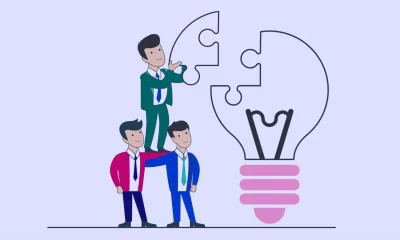

Opportunities and Challenges of Collaborative Conflict Management
-


Collaborative Approaches towards Conflict Management
-
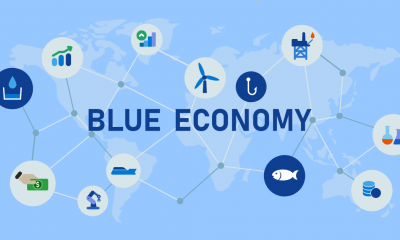

Way Forward in Fostering the Blue Economy for Sustainability
-


Book Review: Actualizing the Right to a Clean and Healthy Environment by Prof. Kariuki Muigua
-


The Challenges in Actualizing Sustainable Blue Economy in Kenya
News & Analysis
Way Forward in Applying Collaborative Approaches Towards Conflict Management
Published
4 weeks agoon
March 24, 2024By
Admin
By Hon. Prof. Kariuki Muigua, OGW, PhD, C.Arb, FCIArb is a Professor of Environmental Law and Dispute Resolution at the University of Nairobi, Member of Permanent Court of Arbitration, Leading Environmental Law Scholar, Respected Sustainable Development Policy Advisor, Top Natural Resources Lawyer, Highly-Regarded Dispute Resolution Expert and Awardee of the Order of Grand Warrior (OGW) of Kenya by H.E. the President of Republic of Kenya. He is the Academic Champion of ADR 2024, the African ADR Practitioner of the Year 2022, the African Arbitrator of the Year 2022, ADR Practitioner of the Year in Kenya 2021, CIArb (Kenya) Lifetime Achievement Award 2021 and ADR Publisher of the Year 2021 and Author of the Kenya’s First ESG Book: Embracing Environmental Social and Governance (ESG) tenets for Sustainable Development” (Glenwood, Nairobi, July 2023) and Kenya’s First Two Climate Change Law Book: Combating Climate Change for Sustainability (Glenwood, Nairobi, October 2023), Achieving Climate Justice for Development (Glenwood, Nairobi, October 2023), Promoting Rule of Law for Sustainable Development (Glenwood, Nairobi, January 2024) and Actualizing the Right to a Clean and Healthy Environment (Glenwood, Nairobi, March 2024)*
It is necessary to embrace and utilize collaborative approaches in managing conflicts. These techniques include mediation, negotiation, and facilitation. These mechanisms are effective in managing conflicts since they encourage parties to embrace and address disagreements through empathy and listening towards mutually beneficial solutions. Collaborative approaches also have the potential to preserve relationships, build trust, and promote long term positive change. They also ensure a win-win solution is found so that everyone is satisfied which creates the condition for peace and sustainability. These approaches are therefore ideal in managing conflicts. It is therefore important to embrace collaborative approaches in order to ensure effective management of conflicts.
In addition, it is necessary for third parties including mediators and facilitators to develop their skills and techniques in order to enhance the effectiveness of collaborative approaches towards conflict management. For example, it has correctly been observed that mediators and facilitators should listen actively and empathetically in order to assist parties to collaborate towards managing their dispute. Therefore, when a dispute arises, the first step should involve listening to all parties involved with an open mind and without judgment. This should entail active listening, which means paying attention to both verbal and nonverbal cues and acknowledging the emotions and perceptions involved.
It has been observed that by listening empathetically, a third party such as a mediator of facilitator can understand each person’s perspective and start to build a foundation for resolving the conflict through collaboration. In addition, while collaborating towards conflict management, it is necessary to encourage and help parties to focus on interests and not positions. It has been pointed out that focusing positions can result in a standstill which can delay or even defeat the conflict management process. However, by identifying and addressing the underlying interests parties can find common ground and collaborate towards coming up with creative solutions towards their conflict.
Mediators and facilitators should also assist parties to look for areas of agreement or shared goals. Identifying a common ground can build momentum and create a positive environment for resolving the conflict. Further, in order to ensure the effectiveness of collaborative approaches in conflict management, it is necessary to build strong collaboration. It has been asserted that strong collaboration can be achieved by establishing a shared purpose, cultivating trust among parties, encouraging active participation by all parties, and promoting effective communication.
Strong collaboration enables parties to develop trust between and among themselves and strengthen communication channels between the various parties. It also helps to generate inclusive solutions that arise from wider stakeholders’ views. Therefore while applying collaborative approaches, it is necessary for parties to foster strong collaboration by identifying common goals, building trust, ensuring that all stakeholders are involved, and communicating effectively in order to come up with win-win outcomes.
Finally, while embracing collaborative approaches in conflict management, it is necessary for parties to consider seeking help from third parties if need arises. For example, negotiation is always the first point of call whenever a conflict arises whereby parties attempt to manage their conflict without the involvement of third parties. It has been described as the most effective collaborative approach towards conflict management since it starts with an understanding by both parties that they must search for solutions that satisfy everyone.
It enables parties to a dispute to come together to openly discuss the issue causing tension, actively listen to each other, and come up with mutually satisfactory solutions. However, it has been correctly observed that negotiation may fail especially if the conflict is particularly complex or involves multiple parties due to challenges in collaborating. In such circumstances, where negotiation fails, parties should consider resorting to other collaborative approaches such as mediation and facilitation where they attempt to manage the conflict with the help of a third party. A mediator or facilitator can assist parties to collaborate and continue with the negotiations and ultimately break the deadlock.
*This is an extract from Kenya’s First Clean and Healthy Environment Book: Actualizing the Right to a Clean and Healthy Environment (Glenwood, Nairobi, January 2024) by Hon. Prof. Kariuki Muigua, OGW, PhD, Professor of Environmental Law and Dispute Resolution, Senior Advocate of Kenya, Chartered Arbitrator, Kenya’s ADR Practitioner of the Year 2021 (Nairobi Legal Awards), ADR Lifetime Achievement Award 2021 (CIArb Kenya), African Arbitrator of the Year 2022, Africa ADR Practitioner of the Year 2022, Member of National Environment Tribunal (NET) Emeritus (2017 to 2023) and Member of Permanent Court of Arbitration nominated by Republic of Kenya and Academic Champion of ADR 2024. Prof. Kariuki Muigua is a foremost Environmental Law and Natural Resources Lawyer and Scholar, Sustainable Development Advocate and Conflict Management Expert in Kenya. Prof. Kariuki Muigua teaches Environmental Law and Dispute resolution at the University of Nairobi School of Law, The Center for Advanced Studies in Environmental Law and Policy (CASELAP) and Wangari Maathai Institute for Peace and Environmental Studies. He has published numerous books and articles on Environmental Law, Environmental Justice Conflict Management, Alternative Dispute Resolution and Sustainable Development. Prof. Muigua is also a Chartered Arbitrator, an Accredited Mediator, the Managing Partner of Kariuki Muigua & Co. Advocates and Africa Trustee Emeritus of the Chartered Institute of Arbitrators 2019-2022. Prof. Muigua is a 2023 recipient of President of the Republic of Kenya Order of Grand Warrior (OGW) Award for his service to the Nation as a Distinguished Expert, Academic and Scholar in Dispute Resolution and recognized among the top 5 leading lawyers and dispute resolution experts in Band 1 in Kenya by the Chambers Global Guide 2024 and was listed in the Inaugural THE LAWYER AFRICA Litigation Hall of Fame 2023 as one of the Top 50 Most Distinguished Litigation Lawyers in Kenya and the Top Arbitrator in Kenya in 2023.
References
Bercovitch. J., ‘Conflict and Conflict Management in Organizations: A Framework for Analysis.’ Available at https://ocd.lcwu.edu.pk/cfiles/International%20Relations/EC/IR403/Conflict.ConflictManagementinOrga nizations.pdf (Accessed on 01/03/2024).
Bercovitch. J., ‘Mediation Success or Failure: A Search for the Elusive Criteria.’ Cardozo Journal of Conflict Resolution, Vol. 7, p 289.
Bloomfield. D., ‘Towards Complementarity in Conflict Management: Resolution and Settlement in Northern Ireland,’ Journal of Peace Research., Volume 32, Issue 2.
Burrell. B., ‘The Five Conflict Styles’ Available at https://web.mit.edu/collaboration/mainsite/ modules/module1/1.11.5.html (Accessed on 01/03/2024).
Demmers. J., ‘Theories of Violent Conflict: An Introduction’ (Routledge, New York, 2012).
Diana. M., ‘From Conflict to Collaboration’ Available at https://www.pmi.org/learning/library/conflict-collaboration-beyond-projectsuccess-1899 (Accessed on 01/03/2024).
Food and Agriculture Organization., ‘Collaborative Conflict Management for Enhanced National Forest Programmes (NFPs)’ Available at https://www.fao.org/3/i2604e/i2604e00.pdf (Accessed on 01/03/2024).
International Organization for Peace Building., ‘Natural Resources and Conflict: A Path to Mediation.’ Available at https://www.interpeace.org/2015/11/naturalresources-and-conflict-a-path-to-mediation/ (Accessed on 01/03/2024).
Isenhart. M.W., & Spangle. M., ‘Summary of “Collaborative Approaches to Resolving Conflict” ‘ Available at https://www.beyondintractability.org/bksum/isenhart-collaborative (Accessed on 01/03/2024).
Kaushal. R., & Kwantes. C., ‘The Role of Culture and Personality in Choice of Conflict Management Strategy.’ International Journal of Intercultural Relations 30 (2006) 579– 603.
Leeds. C.A., ‘Managing Conflicts across Cultures: Challenges to Practitioners.’ International Journal of Peace Studies, Volume 2, No. 2, 1997.
May. E., ‘Collaborating Conflict Style Explained In 4 Minutes’ Available at https://www.niagara institute.com/blog/collaborating-conflict-style/ (Accessed on 01/03/2024).
Miroslavov. M., ‘Mastering the Collaborating Conflict Style In 2024’ Available at https://www.officernd.com/blog/collaborating-conflictstyle/#:~:text=It’s%20one%20of%20the%20strat egies,their%20underlying%20needs %20and%20interests. (Accessed on 01/03/2024).
Muigua. K & Kariuki. F., ‘ADR, Access to Justice and Development in Kenya.’ Available at http://kmco.co.ke/wp-content/uploads/2018/08/ADR-access-tojustice-and-development-inKenyaRevised-version-of-20.10.14.pdf (Accessed on 01/03/2024).
Muigua. K., ‘Alternative Dispute Resolution and Access to Justice in Kenya.’ Glenwood Publishers Limited, 2015.
Muigua. K., ‘Reframing Conflict Management in the East African Community: Moving from Alternative to ‘Appropriate’ Dispute Resolution.’ Available at https://kmco.co.ke/wpcontent/uploads/2023/06/ Reframing-ConflictManagement-in-the-East-African-CommunityMoving-from-Alternative-toAppropriate-Dispute-Resolution (Accessed on 01/03/2024).
Muigua. K., ‘Resolving Conflicts through Mediation in Kenya.’ Glenwood Publishers Limited, 2nd Edition., 2017.
Quain. S., ‘The Advantages & Disadvantages of Collaborating Conflict Management’ Available at https://smallbusiness.chron.com/advantagesdisadvantages-collaborating-conflict-management-36052.html (Accessed on 01/03/2024).
Samuel. A., ‘Is the Collaborative Style of Conflict Management the Best Approach?’ Available at https://www.linkedin.com/pulse/collaborative-style-conflictmanagement-best-approach-samuel-ansah (Accessed on 01/03/2024).
United Nations., ‘Land and Conflict’ Available at https://www.un.org/en/landnatural-resources-conflict/pdfs/GN_ExeS_Land%20and%20Conflict.pdf (Accessed on 01/03/2024).
Weiss. J., & Hughes. J., ‘Want Collaboration?: Accept—and Actively Manage— Conflict’ Available at https://hbr.org/2005/03/want-collaboration-accept-andactively-manage-conflict (Accessed on 01/03/2024).
News & Analysis
Opportunities and Challenges of Collaborative Conflict Management
Published
4 weeks agoon
March 24, 2024By
Admin
By Hon. Prof. Kariuki Muigua, OGW, PhD, C.Arb, FCIArb is a Professor of Environmental Law and Dispute Resolution at the University of Nairobi, Member of Permanent Court of Arbitration, Leading Environmental Law Scholar, Respected Sustainable Development Policy Advisor, Top Natural Resources Lawyer, Highly-Regarded Dispute Resolution Expert and Awardee of the Order of Grand Warrior (OGW) of Kenya by H.E. the President of Republic of Kenya. He is the Academic Champion of ADR 2024, the African ADR Practitioner of the Year 2022, the African Arbitrator of the Year 2022, ADR Practitioner of the Year in Kenya 2021, CIArb (Kenya) Lifetime Achievement Award 2021 and ADR Publisher of the Year 2021 and Author of the Kenya’s First ESG Book: Embracing Environmental Social and Governance (ESG) tenets for Sustainable Development” (Glenwood, Nairobi, July 2023) and Kenya’s First Two Climate Change Law Book: Combating Climate Change for Sustainability (Glenwood, Nairobi, October 2023), Achieving Climate Justice for Development (Glenwood, Nairobi, October 2023), Promoting Rule of Law for Sustainable Development (Glenwood, Nairobi, January 2024) and Actualizing the Right to a Clean and Healthy Environment (Glenwood, Nairobi, March 2024)*
One of the key collaborative approaches that can be applied in conflict management is mediation. Mediation has been defined as a method of conflict management where conflicting parties gather to seek solutions to the conflict, with the assistance of a third party who facilitates discussions and the flow of information, and thus aiding in the process of reaching an agreement.
Mediation is usually a continuation of the negotiation process since it arises where parties to a conflict have attempted negotiations, but have reached a deadlock. Parties therefore involve a third party known as a mediator to assist them continue with the negotiations and ultimately break the deadlock. A mediator does not have the power to impose a solution upon the parties but rather facilitates communication, promotes understanding, focuses the parties on their interests, and uses creative problem solving to enable the parties to reach their own agreement.
Some of the core values and principles guiding mediation as a collaborative approach towards conflict management include impartiality, empathy, valued reputation, and confidentiality. It has also been pointed out that mediation has certain attributes which include informality, flexibility, efficiency, confidentiality, party autonomy and the ability to promote expeditious and cost effective management of dispute which makes it an ideal mechanism for managing disputes.
Mediation is an effective mechanism that can foster collaboration due to its potential to build peace and bring people together, binding them towards a common goal. Mediation can also foster effective management of conflicts by building consensus and collaboration. It has been argued that mediation can enhance collaboration towards conflict management due to its emphasis on the need for a mediator who listen to the wants, needs, fears, and concerns of all sides. Therefore, for mediation to be effective in fostering collaboration, the approach must be mild and non-confrontational because the goal is to make all parties feel comfortable expressing their views and opinions.
Another key collaborative approach towards conflict management is negotiation. It has been defined as an informal process that involves parties to a conflict meeting to identify and discuss the issues at hand so as to arrive at a mutually acceptable solution without the help of a third party. Negotiation is one of the most fundamental methods of managing conflicts which offers parties maximum control over the process66. It aims at harmonizing the interests of the parties concerned amicably. Negotiation has been described as the process that creates and fuels collaboration.
Negotiation fosters collaboration since it involves all parties sitting down together, talking through the conflict and working towards a solution together. Negotiation has been described as the most effective collaborative approach towards conflict management since it starts with an understanding by both parties that they must search for solutions that satisfy everyone. It enables parties to a dispute to come together to openly discuss the issue causing tension, actively listen to each other, and come up with mutually satisfactory solutions. If negotiation fails, parties may resort to other collaborative approaches such as mediation and facilitation where they attempt to manage the conflict with the help of a third party.
Facilitation is another key collaborative approach towards conflict management. Facilitation entails a third party known as a facilitator who helps parties to a conflict to understand their common objectives and achieve them without while remaining objective in the discussion. A facilitator assists conflicting parties in achieving consensus on any disagreements so that they have a strong basis for future action.
It has been pointed out that facilitation is effective in fostering collaboration in conflict management particularly in conflicts which are complex in nature or those that involve multiple parties. In such conflicts, it is necessary to seek outside help from a neutral third party to facilitate the discussion as parties work towards mutually acceptable outcomes.
Applying collaborative approaches towards conflict management offers several advantages. It has been pointed out that collaborating results in mutually acceptable solutions. Such solutions can therefore be effective and long lasting negating the likelihood of conflicts reemerging in future. Collaborating signifies joint efforts, gain for both parties and integrated solutions arrived at by consensual decisions.
Collaborating is also very effective when it is necessary to build or maintain relationships since it focuses on the needs and interests of all parties in a dispute. It has been observed that collaborative approaches emphasize trust-building, open communication, and empathizing with each other’s perspectives which goes beyond resolving conflicts to facilitate deeper understandings of each other. Collaborative approaches can therefore lead to better interpersonal connections.
Collaborating can also result in constructive decision-making since encouraging active engagement and open dialogue helps others think outside of the box and explore innovative paths towards conflict management. Further, by encouraging the participation and involvement of all stakeholders, collaboration ensures that everyone feels heard, valued and understood which is very essential in managing conflicts.
In addition, collaborating sets the tone for future conflict resolutions since it gives those involved the shared responsibility to resolve their problems. However, collaborative approaches towards conflict management have also been associated with several drawbacks. For example, it has been observed that collaborative approaches may not be easy to implement since they involve a lot of effort to get an actionable solution. It has been observed that thorough discussions, active participation, and exploring multiple perspectives as envisaged by collaborative approaches take time.
Collaborating may therefore require patience and dedication to ensure all voices are heard and meaningful resolutions are reached. Achieving consensus through collaborative approaches can also be difficult since conflicting opinions, varying conflict goals, and emotional variables can make the consensus-building process challenging and time-consuming. As a result of these challenges, it has been asserted that collaborative approaches towards conflict management are frequently the most difficult and time-consuming to achieve.
Further, it has been argued that over use of collaboration and consensual decision-making may reflect risk aversion tendencies or an inclination to defuse responsibility. Despite these challenges, collaborative approaches towards conflict management are ideal in ensuring win-win and long lasting outcomes. It is therefore necessary to embrace and apply collaborative approaches towards conflict management.
*This is an extract from Kenya’s First Clean and Healthy Environment Book: Actualizing the Right to a Clean and Healthy Environment (Glenwood, Nairobi, January 2024) by Hon. Prof. Kariuki Muigua, OGW, PhD, Professor of Environmental Law and Dispute Resolution, Senior Advocate of Kenya, Chartered Arbitrator, Kenya’s ADR Practitioner of the Year 2021 (Nairobi Legal Awards), ADR Lifetime Achievement Award 2021 (CIArb Kenya), African Arbitrator of the Year 2022, Africa ADR Practitioner of the Year 2022, Member of National Environment Tribunal (NET) Emeritus (2017 to 2023) and Member of Permanent Court of Arbitration nominated by Republic of Kenya and Academic Champion of ADR 2024. Prof. Kariuki Muigua is a foremost Environmental Law and Natural Resources Lawyer and Scholar, Sustainable Development Advocate and Conflict Management Expert in Kenya. Prof. Kariuki Muigua teaches Environmental Law and Dispute resolution at the University of Nairobi School of Law, The Center for Advanced Studies in Environmental Law and Policy (CASELAP) and Wangari Maathai Institute for Peace and Environmental Studies. He has published numerous books and articles on Environmental Law, Environmental Justice Conflict Management, Alternative Dispute Resolution and Sustainable Development. Prof. Muigua is also a Chartered Arbitrator, an Accredited Mediator, the Managing Partner of Kariuki Muigua & Co. Advocates and Africa Trustee Emeritus of the Chartered Institute of Arbitrators 2019-2022. Prof. Muigua is a 2023 recipient of President of the Republic of Kenya Order of Grand Warrior (OGW) Award for his service to the Nation as a Distinguished Expert, Academic and Scholar in Dispute Resolution and recognized among the top 5 leading lawyers and dispute resolution experts in Band 1 in Kenya by the Chambers Global Guide 2024 and was listed in the Inaugural THE LAWYER AFRICA Litigation Hall of Fame 2023 as one of the Top 50 Most Distinguished Litigation Lawyers in Kenya and the Top Arbitrator in Kenya in 2023.
References
Bercovitch. J., ‘Conflict and Conflict Management in Organizations: A Framework for Analysis.’ Available at https://ocd.lcwu.edu.pk/cfiles/International%20Relations/EC/IR403/Conflict.ConflictManagementinOrga nizations.pdf (Accessed on 01/03/2024).
Bercovitch. J., ‘Mediation Success or Failure: A Search for the Elusive Criteria.’ Cardozo Journal of Conflict Resolution, Vol. 7, p 289.
Bloomfield. D., ‘Towards Complementarity in Conflict Management: Resolution and Settlement in Northern Ireland,’ Journal of Peace Research., Volume 32, Issue 2.
Burrell. B., ‘The Five Conflict Styles’ Available at https://web.mit.edu/collaboration/mainsite/ modules/module1/1.11.5.html (Accessed on 01/03/2024).
Demmers. J., ‘Theories of Violent Conflict: An Introduction’ (Routledge, New York, 2012).
Diana. M., ‘From Conflict to Collaboration’ Available at https://www.pmi.org/learning/library/conflict-collaboration-beyond-projectsuccess-1899 (Accessed on 01/03/2024).
Food and Agriculture Organization., ‘Collaborative Conflict Management for Enhanced National Forest Programmes (NFPs)’ Available at https://www.fao.org/3/i2604e/i2604e00.pdf (Accessed on 01/03/2024).
International Organization for Peace Building., ‘Natural Resources and Conflict: A Path to Mediation.’ Available at https://www.interpeace.org/2015/11/naturalresources-and-conflict-a-path-to-mediation/ (Accessed on 01/03/2024).
Isenhart. M.W., & Spangle. M., ‘Summary of “Collaborative Approaches to Resolving Conflict” ‘ Available at https://www.beyondintractability.org/bksum/isenhart-collaborative (Accessed on 01/03/2024).
Kaushal. R., & Kwantes. C., ‘The Role of Culture and Personality in Choice of Conflict Management Strategy.’ International Journal of Intercultural Relations 30 (2006) 579– 603.
Leeds. C.A., ‘Managing Conflicts across Cultures: Challenges to Practitioners.’ International Journal of Peace Studies, Volume 2, No. 2, 1997.
May. E., ‘Collaborating Conflict Style Explained In 4 Minutes’ Available at https://www.niagara institute.com/blog/collaborating-conflict-style/ (Accessed on 01/03/2024).
Miroslavov. M., ‘Mastering the Collaborating Conflict Style In 2024’ Available at https://www.officernd.com/blog/collaborating-conflictstyle/#:~:text=It’s%20one%20of%20the%20strat egies,their%20underlying%20needs %20and%20interests. (Accessed on 01/03/2024).
Muigua. K & Kariuki. F., ‘ADR, Access to Justice and Development in Kenya.’ Available at http://kmco.co.ke/wp-content/uploads/2018/08/ADR-access-tojustice-and-development-inKenyaRevised-version-of-20.10.14.pdf (Accessed on 01/03/2024).
Muigua. K., ‘Alternative Dispute Resolution and Access to Justice in Kenya.’ Glenwood Publishers Limited, 2015.
Muigua. K., ‘Reframing Conflict Management in the East African Community: Moving from Alternative to ‘Appropriate’ Dispute Resolution.’ Available at https://kmco.co.ke/wpcontent/uploads/2023/06/ Reframing-ConflictManagement-in-the-East-African-CommunityMoving-from-Alternative-toAppropriate-Dispute-Resolution (Accessed on 01/03/2024).
Muigua. K., ‘Resolving Conflicts through Mediation in Kenya.’ Glenwood Publishers Limited, 2nd Edition., 2017.
Quain. S., ‘The Advantages & Disadvantages of Collaborating Conflict Management’ Available at https://smallbusiness.chron.com/advantagesdisadvantages-collaborating-conflict-management-36052.html (Accessed on 01/03/2024).
Samuel. A., ‘Is the Collaborative Style of Conflict Management the Best Approach?’ Available at https://www.linkedin.com/pulse/collaborative-style-conflictmanagement-best-approach-samuel-ansah (Accessed on 01/03/2024).
United Nations., ‘Land and Conflict’ Available at https://www.un.org/en/landnatural-resources-conflict/pdfs/GN_ExeS_Land%20and%20Conflict.pdf (Accessed on 01/03/2024).
Weiss. J., & Hughes. J., ‘Want Collaboration?: Accept—and Actively Manage— Conflict’ Available at https://hbr.org/2005/03/want-collaboration-accept-andactively-manage-conflict (Accessed on 01/03/2024).
News & Analysis
Collaborative Approaches towards Conflict Management
Published
4 weeks agoon
March 23, 2024By
Admin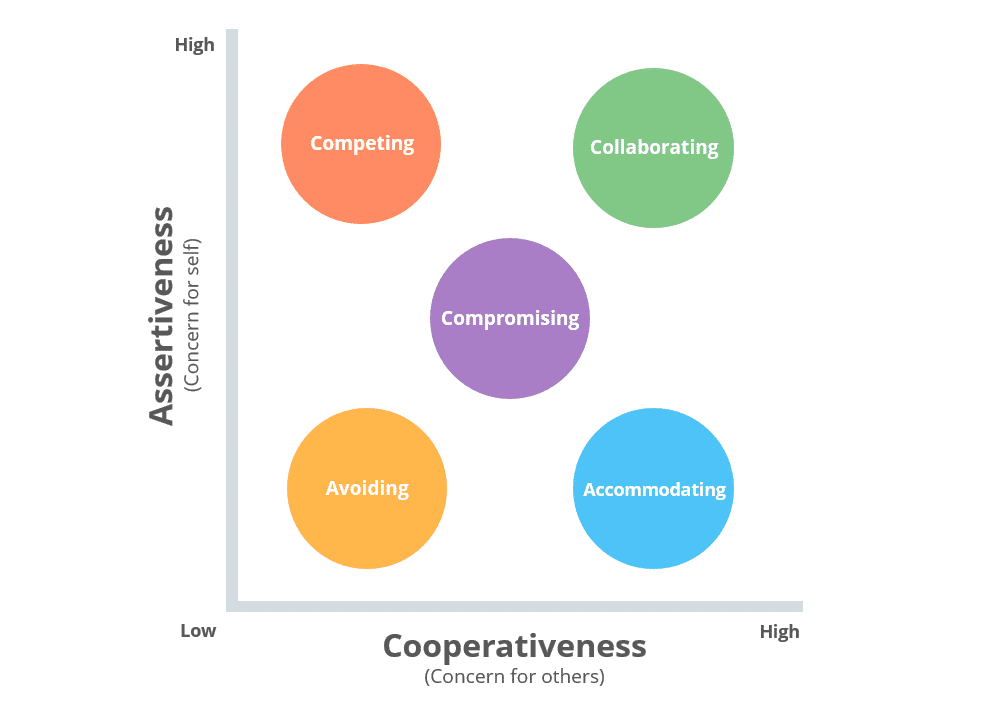
By Hon. Prof. Kariuki Muigua, OGW, PhD, C.Arb, FCIArb is a Professor of Environmental Law and Dispute Resolution at the University of Nairobi, Member of Permanent Court of Arbitration, Leading Environmental Law Scholar, Respected Sustainable Development Policy Advisor, Top Natural Resources Lawyer, Highly-Regarded Dispute Resolution Expert and Awardee of the Order of Grand Warrior (OGW) of Kenya by H.E. the President of Republic of Kenya. He is the Academic Champion of ADR 2024, the African ADR Practitioner of the Year 2022, the African Arbitrator of the Year 2022, ADR Practitioner of the Year in Kenya 2021, CIArb (Kenya) Lifetime Achievement Award 2021 and ADR Publisher of the Year 2021 and Author of the Kenya’s First ESG Book: Embracing Environmental Social and Governance (ESG) tenets for Sustainable Development” (Glenwood, Nairobi, July 2023) and Kenya’s First Two Climate Change Law Book: Combating Climate Change for Sustainability (Glenwood, Nairobi, October 2023), Achieving Climate Justice for Development (Glenwood, Nairobi, October 2023), Promoting Rule of Law for Sustainable Development (Glenwood, Nairobi, January 2024) and Actualizing the Right to a Clean and Healthy Environment (Glenwood, Nairobi, March 2024)*
Conflict management can involve different approaches. These techniques include collaborating, competing, avoiding, accommodating, and compromising. Collaborative approaches towards conflict management have been hailed as the most ideal due to their potential to produce satisfactory and long-term results. Collaborative approaches have been hailed as ensuring efficient and effective management of conflicts towards peace and sustainability.
Collaborative conflict management refers to the use of a wide range of informal approaches where competing or opposing stakeholder groups work together to reach an agreement on a controversial issue. In addition, it has been pointed out that collaborative conflict resolution encourages teams to work through disagreements through empathy, listening, and mutually beneficial solutions. Collaboration, unlike compromise, does not focus on both sides making sacrifices. Instead, in collaborative approaches, both parties come up with mutually beneficial solutions. Collaborating has been identified as a powerful approach to conflict resolution built on cooperation, open communication, and finding win-win outcomes.
It has been argued that among all conflict management techniques, collaborative approaches are the most likely to identify the root cause of a conflict, pinpoint the underlying needs of the parties involved, and come to a win-win outcome for everyone. Through collaboration, all parties to a conflict come together to openly discuss the issue causing tension, actively listen to each other, and work towards a solution that is mutually satisfactory and acceptable to everyone.
It has been pointed out that collaborative conflict management aims to achieve several objectives which include: promoting the participation of diverse or competing stakeholder groups in order to reach agreement on a controversial issue; assisting stakeholders in adopting an attitude that is oriented towards cooperation rather than pursuit of individual interests; establishing new forms of communication and decision making on important issues, and raising awareness of the importance of equity and accountability in stakeholder communication; developing partnerships and strengthening stakeholder networks; creating space for stakeholders to communicate in order to bring about future agreements so that concrete action can be taken; and producing decisions that have a strong base of support.
In addition, it has been observed that collaborative approaches towards conflict management aim to preserve relationships, build trust, and promote long term positive change. Collaborative conflict management is based on certain principles key among them being ensuring open communication, finding common ground, and creating a culture of trust. Collaborative approaches towards conflict management has been hailed as the “win-win” strategy to conflict management. It is an effective means of restoring peace.
Further, it has been argued that collaborative approaches are a better way to conflict management since they encourage freedom of expression, where the conflicting parties express their thoughts and concerns verbally, which makes all parties involved in the dispute feel valued and be aware of each other’s concern. In addition, it has been argued that collaborating sets the tone for future conflict resolution and gives those involved the shared responsibility to manage conflicts prior to escalation.
Managing conflicts in a collaborative way helps to develop trust and strengthen communication channels between the various parties. For example, it has been pointed out that in conflicts related to natural resources, collaborative approaches help in generating inclusive solutions that arise from wider stakeholders’ views, and therefore helps clarify policies, institutions and processes that regulate access to – or control over – natural resources. It has been observed that collaborating entails all parties to a conflict sitting down together, discussing the conflict, and working towards a solution together.
Collaborative approaches towards conflict management have been identified as vital when it is necessary to maintain all parties’ relationships or when the solution itself will have a significant impact on large group of people. In such situations, collaborating ensures a win-win solution is found so that everyone is satisfied which creates the condition for peace and sustainability.
It has been pointed out that for collaborative approaches to be effective, it is necessary for all parties to have collaborating skills such as the ability to use active or effective listening, confront situations in a nonthreatening way, analyze input, and identify underlying concerns. Collaborative approaches towards conflict management are important in fostering effective and long-lasting outcomes. It is therefore necessary to apply collaborative approaches in order to ensure effective and efficient management of conflicts.
*This is an extract from Kenya’s First Clean and Healthy Environment Book: Actualizing the Right to a Clean and Healthy Environment (Glenwood, Nairobi, January 2024) by Hon. Prof. Kariuki Muigua, OGW, PhD, Professor of Environmental Law and Dispute Resolution, Senior Advocate of Kenya, Chartered Arbitrator, Kenya’s ADR Practitioner of the Year 2021 (Nairobi Legal Awards), ADR Lifetime Achievement Award 2021 (CIArb Kenya), African Arbitrator of the Year 2022, Africa ADR Practitioner of the Year 2022, Member of National Environment Tribunal (NET) Emeritus (2017 to 2023) and Member of Permanent Court of Arbitration nominated by Republic of Kenya and Academic Champion of ADR 2024. Prof. Kariuki Muigua is a foremost Environmental Law and Natural Resources Lawyer and Scholar, Sustainable Development Advocate and Conflict Management Expert in Kenya. Prof. Kariuki Muigua teaches Environmental Law and Dispute resolution at the University of Nairobi School of Law, The Center for Advanced Studies in Environmental Law and Policy (CASELAP) and Wangari Maathai Institute for Peace and Environmental Studies. He has published numerous books and articles on Environmental Law, Environmental Justice Conflict Management, Alternative Dispute Resolution and Sustainable Development. Prof. Muigua is also a Chartered Arbitrator, an Accredited Mediator, the Managing Partner of Kariuki Muigua & Co. Advocates and Africa Trustee Emeritus of the Chartered Institute of Arbitrators 2019-2022. Prof. Muigua is a 2023 recipient of President of the Republic of Kenya Order of Grand Warrior (OGW) Award for his service to the Nation as a Distinguished Expert, Academic and Scholar in Dispute Resolution and recognized among the top 5 leading lawyers and dispute resolution experts in Band 1 in Kenya by the Chambers Global Guide 2024 and was listed in the Inaugural THE LAWYER AFRICA Litigation Hall of Fame 2023 as one of the Top 50 Most Distinguished Litigation Lawyers in Kenya and the Top Arbitrator in Kenya in 2023.
References
Bercovitch. J., ‘Conflict and Conflict Management in Organizations: A Framework for Analysis.’ Available at https://ocd.lcwu.edu.pk/cfiles/International%20Relations/EC/IR403/Conflict.ConflictManagementinOrga nizations.pdf (Accessed on 01/03/2024).
Bercovitch. J., ‘Mediation Success or Failure: A Search for the Elusive Criteria.’ Cardozo Journal of Conflict Resolution, Vol. 7, p 289.
Bloomfield. D., ‘Towards Complementarity in Conflict Management: Resolution and Settlement in Northern Ireland,’ Journal of Peace Research., Volume 32, Issue 2.
Burrell. B., ‘The Five Conflict Styles’ Available at https://web.mit.edu/collaboration/mainsite/ modules/module1/1.11.5.html (Accessed on 01/03/2024).
Demmers. J., ‘Theories of Violent Conflict: An Introduction’ (Routledge, New York, 2012).
Diana. M., ‘From Conflict to Collaboration’ Available at https://www.pmi.org/learning/library/conflict-collaboration-beyond-projectsuccess-1899 (Accessed on 01/03/2024).
Food and Agriculture Organization., ‘Collaborative Conflict Management for Enhanced National Forest Programmes (NFPs)’ Available at https://www.fao.org/3/i2604e/i2604e00.pdf (Accessed on 01/03/2024).
International Organization for Peace Building., ‘Natural Resources and Conflict: A Path to Mediation.’ Available at https://www.interpeace.org/2015/11/naturalresources-and-conflict-a-path-to-mediation/ (Accessed on 01/03/2024).
Isenhart. M.W., & Spangle. M., ‘Summary of “Collaborative Approaches to Resolving Conflict” ‘ Available at https://www.beyondintractability.org/bksum/isenhart-collaborative (Accessed on 01/03/2024).
Kaushal. R., & Kwantes. C., ‘The Role of Culture and Personality in Choice of Conflict Management Strategy.’ International Journal of Intercultural Relations 30 (2006) 579– 603.
Leeds. C.A., ‘Managing Conflicts across Cultures: Challenges to Practitioners.’ International Journal of Peace Studies, Volume 2, No. 2, 1997.
May. E., ‘Collaborating Conflict Style Explained In 4 Minutes’ Available at https://www.niagara institute.com/blog/collaborating-conflict-style/ (Accessed on 01/03/2024).
Miroslavov. M., ‘Mastering the Collaborating Conflict Style In 2024’ Available at https://www.officernd.com/blog/collaborating-conflictstyle/#:~:text=It’s%20one%20of%20the%20strat egies,their%20underlying%20needs %20and%20interests. (Accessed on 01/03/2024).
Muigua. K & Kariuki. F., ‘ADR, Access to Justice and Development in Kenya.’ Available at http://kmco.co.ke/wp-content/uploads/2018/08/ADR-access-tojustice-and-development-inKenyaRevised-version-of-20.10.14.pdf (Accessed on 01/03/2024).
Muigua. K., ‘Alternative Dispute Resolution and Access to Justice in Kenya.’ Glenwood Publishers Limited, 2015.
Muigua. K., ‘Reframing Conflict Management in the East African Community: Moving from Alternative to ‘Appropriate’ Dispute Resolution.’ Available at https://kmco.co.ke/wpcontent/uploads/2023/06/ Reframing-ConflictManagement-in-the-East-African-CommunityMoving-from-Alternative-toAppropriate-Dispute-Resolution (Accessed on 01/03/2024).
Muigua. K., ‘Resolving Conflicts through Mediation in Kenya.’ Glenwood Publishers Limited, 2nd Edition., 2017.
Quain. S., ‘The Advantages & Disadvantages of Collaborating Conflict Management’ Available at https://smallbusiness.chron.com/advantagesdisadvantages-collaborating-conflict-management-36052.html (Accessed on 01/03/2024).
Samuel. A., ‘Is the Collaborative Style of Conflict Management the Best Approach?’ Available at https://www.linkedin.com/pulse/collaborative-style-conflictmanagement-best-approach-samuel-ansah (Accessed on 01/03/2024).
United Nations., ‘Land and Conflict’ Available at https://www.un.org/en/landnatural-resources-conflict/pdfs/GN_ExeS_Land%20and%20Conflict.pdf (Accessed on 01/03/2024).
Weiss. J., & Hughes. J., ‘Want Collaboration?: Accept—and Actively Manage— Conflict’ Available at https://hbr.org/2005/03/want-collaboration-accept-andactively-manage-conflict (Accessed on 01/03/2024).

Irene Kiwool: My Track Record and Call to PACT for Better Nairobi LSK

A Toolkit for Customers on accessing Financial Services in Kenya

Way Forward in Applying Collaborative Approaches Towards Conflict Management

Opportunities and Challenges of Collaborative Conflict Management

Collaborative Approaches towards Conflict Management

Way Forward in Fostering the Blue Economy for Sustainability
Trending
-

 Lawyers11 months ago
Lawyers11 months agoTHE LAWYER AFRICA Litigation Hall of Fame | Kenya in 2023
-
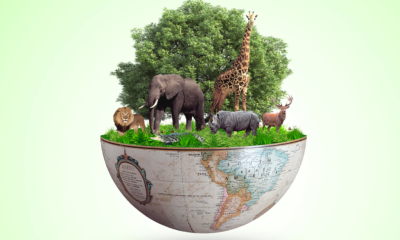
 News & Analysis2 years ago
News & Analysis2 years agoThe Definition and Scope of Biodiversity
-
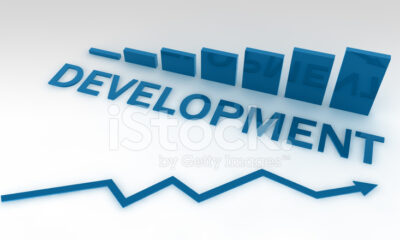
 News & Analysis2 years ago
News & Analysis2 years agoThe Definition, Aspects and Theories of Development
-
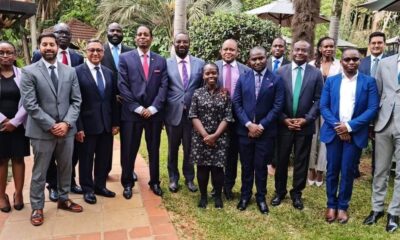
 News & Analysis2 years ago
News & Analysis2 years agoTHE TOP 200 ARBITRATORS IN KENYA 2022
-

 News & Analysis6 months ago
News & Analysis6 months agoThe Role of NEMA in Pollution Control in Kenya
-

 News & Analysis2 years ago
News & Analysis2 years agoRole of Science and Technology in Environmental Management in Kenya
-
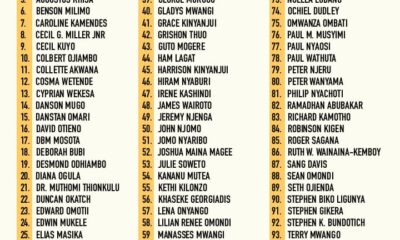
 Lawyers11 months ago
Lawyers11 months agoTHE LAWYER AFRICA Top 100 Litigation Lawyers in Kenya 2023
-
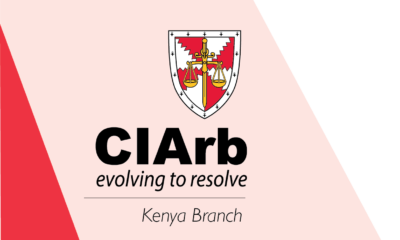
 News & Analysis7 months ago
News & Analysis7 months agoHow to Become an Arbitrator in Kenya
